Astronomy
We bought our Celestron CPC800 XLT in late August, mainly intending visual use but I did have the hopes of taking a few astrophotos with it as well else we would have opted for a much lower end scope. If you are familiar with the CPC range they are dual-forked on an alt-az mount. I expressed my interest and some simple questions about astrophotos to our favorite astronomy forum and was basically told that with the alt-az setup that deep space photography was near-impossible as you just cant get the exposure length needed to show the objects. Well, I dont like being told something is not possible so I set out with the equipment I had at the time to see just what I could do. This equipment consisted of the new scope, my Nikon D40, and a t-ring/t-adapter to mount the D40 to the scope. I started with some moon shots and Jupiter just to get familiar with processing basic astrophotos and quickly learned there was a huge curve when it came to astrophotographic processing and it was nothing like the processing I had done on photographs to date. From there I started with a few brighter star clusters and some bright nebula, namely M17 "Swan Nebula"
I was quite pleased that my first attempt at M17 did indeed show the object though went to prove just how far I had to go with my processing skills. I retook and reprocessed M17 over the first few weeks.
I went away from M17 for a while, as it had been a month or two since we got the scope new objects were rising at reasonable times to image so I began shooting them. I also was able to pick up a Meade DSI II Pro astrocam for a great price used and spent a few weeks away from the Nikon just using the Meade and shooting LRGB shots as well as Ha when the Moon was bright. The DSI II Pro has a small chip so a lot narrower field of view (FOV) so I was concentrating on alot smaller objects or just portions of larger nebula, but was still getting decent results, especially from the Ha, on nebulas that I was told that could not be imaged in 30s subs.
I went back and reprocessed my earlier shots and was amazed by the difference just a few months of processing practice had done. So, a few nights ago I decided to pop the Nikon back on for some comparison shots of M17 to see how I had progressed. To be fair, I shot with the same ISO setting (ISO 800) as I had before. I took more subs than before (120 vs the 50-60 I had before), and was quite happy with the outcome. I also took this new stack of 120 x 30s subs and stacked it with the data from the past few months making a combined stack of about 320 x 30s subs. The latest shot and the combined stack are the last two shown.
Conclusions: Yes, it is possible to image nebulas with alt-az with a stock camera in a border-line red zone (I am located right near San Antonio). A lot of practice both with the images (getting a crisp focus, timing the exposures to not get field rotation, etc) and processing (reading, practicing on others? data, redoing old data, more practice) has shown this to me. I have even been able to image the Horsehead Nebula, which I was told was not going to be possible on an alt-az and not unless I was in a dark site could I image it. . . WRONG! Its not magazine quality, but its there, and half-way decent. Yes, a wedge to polar align the scope will help my imaging greatly (and is next on the list to get when I want to buy more equipment), but it is possible without one. Some fainter emission nebulas and nebulas that are more spread out might be beyond the reaches of this setup, but I am imaging a lot and enjoying every bit of it!
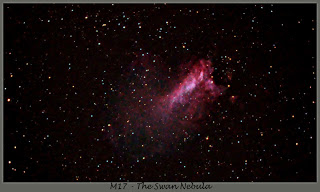
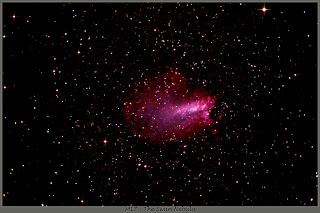

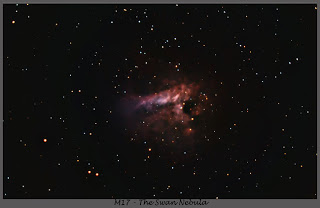
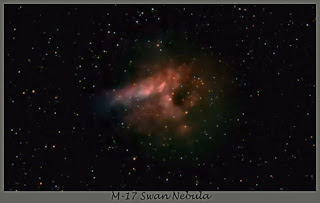
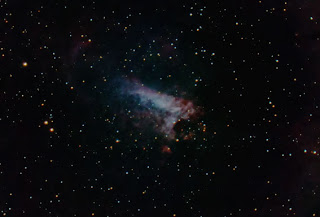

- A Full Week Of Astrophotography In The Haute-alpes, France
I just spent a week down at Olly Penrice's astronomy mecca in Southern France. Crazy me drove down with all of my gear (the whole trip both ways and what driving we did during the day down there totaled 2100 miles!) and much to Olly's amusement...
- 6 Months Later ....
I started astrophotography almost as soon as I got my scope, which means it has now been 6 months since I took my very first astrophoto ... I am almost ashamed to show my first few shots and processing of them. The first ones of M31 and M13 were not focused...
- Every Day In Every Way ....
I'm getting better and better .... at least in my own humble opinion. The new Atik 314L+ camera I am using now to image greatly helped, then add in my new wedge and that has helped bumped up my imaging possibilities another level. I have also been...
- Finally The Clouds Clear
After endless rain and clouds for weeks, we have finally gotten some nice evenings. I was able to get to a semi-dark spot but still within a reasonable driving distance this past weekend and did a little imaging while socializing with the other astronomers...
- Processing Comparison Of M42
I very quickly learned a few months ago when I started astrophotography that processing made all the difference in shots. Yes, it takes some skill to set up a shot and different equipment can make quite a difference, but where the real photos are set...
Astronomy
Astrophotography on an alt-az mount with a stock camera
We bought our Celestron CPC800 XLT in late August, mainly intending visual use but I did have the hopes of taking a few astrophotos with it as well else we would have opted for a much lower end scope. If you are familiar with the CPC range they are dual-forked on an alt-az mount. I expressed my interest and some simple questions about astrophotos to our favorite astronomy forum and was basically told that with the alt-az setup that deep space photography was near-impossible as you just cant get the exposure length needed to show the objects. Well, I dont like being told something is not possible so I set out with the equipment I had at the time to see just what I could do. This equipment consisted of the new scope, my Nikon D40, and a t-ring/t-adapter to mount the D40 to the scope. I started with some moon shots and Jupiter just to get familiar with processing basic astrophotos and quickly learned there was a huge curve when it came to astrophotographic processing and it was nothing like the processing I had done on photographs to date. From there I started with a few brighter star clusters and some bright nebula, namely M17 "Swan Nebula"
I was quite pleased that my first attempt at M17 did indeed show the object though went to prove just how far I had to go with my processing skills. I retook and reprocessed M17 over the first few weeks.
For first attempts I was quite pleased. I moved on to other objects over the next few weeks and found that despite what I was told, i could indeed get some passable shots of nebula and some galaxies. This encouraged me greatly and I kept at it, taking the scope and camera out every clear night I could and not only looking visually but as the evening went on hooking up the camera and shooting the cosmos.
I occasionally went back to M17 to see what improvement I could get. On occasion I would stack my new data with the previous weeks' data to see what difference more subexposures would provide and proved to myself that yes, more subexposures (subs) does help. On the alt-az mount I was limited most nights to 30 sec or less subs but by taking 50-60 I was coming up with better and better results.
I went away from M17 for a while, as it had been a month or two since we got the scope new objects were rising at reasonable times to image so I began shooting them. I also was able to pick up a Meade DSI II Pro astrocam for a great price used and spent a few weeks away from the Nikon just using the Meade and shooting LRGB shots as well as Ha when the Moon was bright. The DSI II Pro has a small chip so a lot narrower field of view (FOV) so I was concentrating on alot smaller objects or just portions of larger nebula, but was still getting decent results, especially from the Ha, on nebulas that I was told that could not be imaged in 30s subs.
I went back and reprocessed my earlier shots and was amazed by the difference just a few months of processing practice had done. So, a few nights ago I decided to pop the Nikon back on for some comparison shots of M17 to see how I had progressed. To be fair, I shot with the same ISO setting (ISO 800) as I had before. I took more subs than before (120 vs the 50-60 I had before), and was quite happy with the outcome. I also took this new stack of 120 x 30s subs and stacked it with the data from the past few months making a combined stack of about 320 x 30s subs. The latest shot and the combined stack are the last two shown.
Conclusions: Yes, it is possible to image nebulas with alt-az with a stock camera in a border-line red zone (I am located right near San Antonio). A lot of practice both with the images (getting a crisp focus, timing the exposures to not get field rotation, etc) and processing (reading, practicing on others? data, redoing old data, more practice) has shown this to me. I have even been able to image the Horsehead Nebula, which I was told was not going to be possible on an alt-az and not unless I was in a dark site could I image it. . . WRONG! Its not magazine quality, but its there, and half-way decent. Yes, a wedge to polar align the scope will help my imaging greatly (and is next on the list to get when I want to buy more equipment), but it is possible without one. Some fainter emission nebulas and nebulas that are more spread out might be beyond the reaches of this setup, but I am imaging a lot and enjoying every bit of it!







- A Full Week Of Astrophotography In The Haute-alpes, France
I just spent a week down at Olly Penrice's astronomy mecca in Southern France. Crazy me drove down with all of my gear (the whole trip both ways and what driving we did during the day down there totaled 2100 miles!) and much to Olly's amusement...
- 6 Months Later ....
I started astrophotography almost as soon as I got my scope, which means it has now been 6 months since I took my very first astrophoto ... I am almost ashamed to show my first few shots and processing of them. The first ones of M31 and M13 were not focused...
- Every Day In Every Way ....
I'm getting better and better .... at least in my own humble opinion. The new Atik 314L+ camera I am using now to image greatly helped, then add in my new wedge and that has helped bumped up my imaging possibilities another level. I have also been...
- Finally The Clouds Clear
After endless rain and clouds for weeks, we have finally gotten some nice evenings. I was able to get to a semi-dark spot but still within a reasonable driving distance this past weekend and did a little imaging while socializing with the other astronomers...
- Processing Comparison Of M42
I very quickly learned a few months ago when I started astrophotography that processing made all the difference in shots. Yes, it takes some skill to set up a shot and different equipment can make quite a difference, but where the real photos are set...
